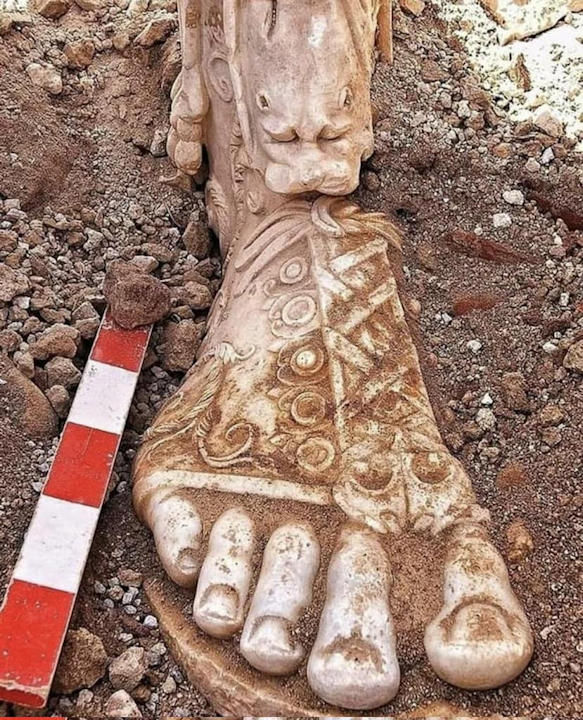Impressive Column Of Emperor Marcus Aurelius – War Monument From Ancient Rome
A. Sutherland - AncientPages.com - Often called the "philosopher on the throne" or the "philosopher-emperor," Marcus Aurelius (121 AD - 180 AD) was a powerful Roman Emperor who ruled for nearly two decades.
The Statue of Marcus Aurelius in the Musei Capitolini in Rome. Credit: Zanner/Wikimedia Commons.
When he died, his son built an impressive column that stands 100 feet high and bears a band of reliefs.
Who Was Emperor Marcus Aurelius?
Emperor Aurelius was not only a military leader but also a scholar who was known for his intellectual pursuits. His most significant scholarly interest was Stoicism, a philosophy that emphasized fate, reason, and self-restraint.
Chosen by Emperor Hadrian to be his eventual successor, Aurelius took control of the Roman Empire in 161 AD along with his brother Verus.
Foot of a marble sculpture of Marcus Aurelius unearthed in Southern Turkey. Emperor Aurelius was not only a military leader but also a scholar known for his intellectual pursuits. Credit: SARP
When his brother died in 177 AD, Aurelius reigned as the sole emperor for three years until he died in 180 AD.
He was one of the most respected Roman emperors, but he came to power when the Roman Empire was marked by war and disease. In the 160s, Romans battled with the Parthian empire for control over lands in the East.
When the Parthian War ended, Aurelius and Verus faced another military conflict with German tribes in the late 160s. German tribes crossed the Danube River and attacked a Roman city.
Fragment of the Column of Marcus Aurelius. Credit: Public Domain
Contrary to Augustus, "who enlisted large numbers of freed slaves to help bulk up his army, Marcus Aurelius used groups of former gladiators on his campaigns in the Danube. At this time, the Roman army just did not have access to sufficient numbers of soldiers needed compared to the old manpower.
In the fourth century CE, the emperors simply found that the combination of a declining population and the quick expansion of the army together made it too difficult to raise large numbers of soldiers needed to protect her borders..." (Jackson, Roy. Rome: Roman Empire)
In 175 AD, Emperor Aurelius was challenged by Avidius Cassius, who claimed the title of emperor for himself.
A fragment of the column. Credit: Barosaurus Lentus - CC BY-SA 3.0
Avidius Cassius had heard rumors Aurelius was ill and thought it was an excellent opportunity to get to power. Emperor Aurelius never had to engage in direct military conflict with Avidius Cassius because his soldiers killed him.
What makes Emperor Marcus Aurelius unique is that he is not remembered as a great military leader but as a person driven by reason.
A collection of his thoughts has been published in a work entitled The Meditations. Based on his Stoic beliefs, the work consists of his notes on life.
The Column of Marcus Aurelius is a Roman victory column in Piazza Colonna, Rome, ItalyCredit: Marco Assini - CC BY-SA 2.0
"Everything we hear is an opinion, not a fact. Everything we see is a perspective, not the truth." - Marcus Aurelius
Impressive Column Of Marcus Aurelius In Rome
Inspired by its more famous predecessor, Trajan's Column, the Column of Marcus Aurelius stands in Piazza Colonna in Rome. It was erected by Commodus (161 AD. – 192), the son of Marcus Aurelius.
The column was nicknamed Centenaria, "hundredfooter," because it was 100 Roman feet or 29.60 meters high.
Lower part of the column. Credit: Public Domain
On the top of the column was a statue of Marcus Aurelius; today, the apostle Paul stands there.
The inscription on the base of the column gives the honorific title of Emperor Aurelius.
Updated on October 12, 2022
Written by: A. Sutherland - AncientPages.com Senior Staff Writer
Copyright © AncientPages.com All rights reserved. This material may not be published, broadcast, rewritten or redistributed in whole or part without the express written permission of AncientPages.com
More From Ancient Pages
-
 Extremely Rare 2,700-Year-Old Black Stone Seal Depicting A Winged Genie Discovered In Jerusalem
Archaeology | Sep 2, 2024
Extremely Rare 2,700-Year-Old Black Stone Seal Depicting A Winged Genie Discovered In Jerusalem
Archaeology | Sep 2, 2024 -
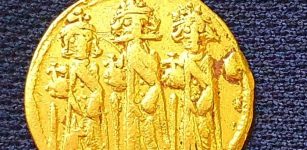 Rare Ancient Gold Coin Depicting Emperor Heraclius And Hill Of Golgotha Discovered In Israel
Archaeology | Aug 25, 2021
Rare Ancient Gold Coin Depicting Emperor Heraclius And Hill Of Golgotha Discovered In Israel
Archaeology | Aug 25, 2021 -
 Antediluvian Discoveries In Britain, Germany And France That Could Re-Write History
Ancient Mysteries | Jan 4, 2019
Antediluvian Discoveries In Britain, Germany And France That Could Re-Write History
Ancient Mysteries | Jan 4, 2019 -
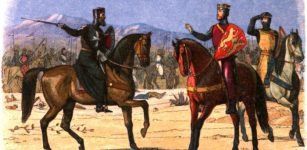 First Crusade Was Launched In 1095
Ancient History Facts | Jun 19, 2018
First Crusade Was Launched In 1095
Ancient History Facts | Jun 19, 2018 -
 Our Understanding Of Human Prehistory And Societies Is Wrong – Scientists Say
Featured Stories | Nov 3, 2022
Our Understanding Of Human Prehistory And Societies Is Wrong – Scientists Say
Featured Stories | Nov 3, 2022 -
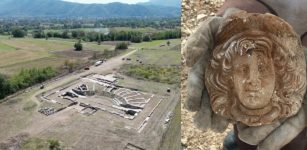 Roman ‘Backwater’ Challenges Major Assumptions About The Ancient Empire’s Decline
Archaeology | Dec 12, 2023
Roman ‘Backwater’ Challenges Major Assumptions About The Ancient Empire’s Decline
Archaeology | Dec 12, 2023 -
 Latin America’s Oldest Beer Resurrected From 400-Year-Old Yeast
Archaeology | Aug 4, 2022
Latin America’s Oldest Beer Resurrected From 400-Year-Old Yeast
Archaeology | Aug 4, 2022 -
 Little Known History Of Amazon’s Ashaninka People Studied By Researchers
Archaeology | Mar 21, 2023
Little Known History Of Amazon’s Ashaninka People Studied By Researchers
Archaeology | Mar 21, 2023 -
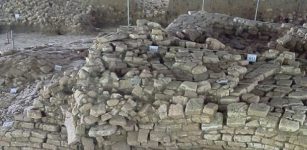 Wrecks of ancient ships found in Malaysia’s Sungai Batu ancient site
News | Sep 4, 2015
Wrecks of ancient ships found in Malaysia’s Sungai Batu ancient site
News | Sep 4, 2015 -
 Scribes: One Of The Noblest And Highly Recommended Professions In Ancient Egypt
Featured Stories | May 10, 2023
Scribes: One Of The Noblest And Highly Recommended Professions In Ancient Egypt
Featured Stories | May 10, 2023 -
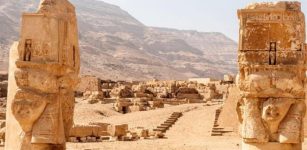 Cache Of 13,000 Ostraca Unearthed In Upper Egypt’s Sohag
Archaeology | Dec 21, 2021
Cache Of 13,000 Ostraca Unearthed In Upper Egypt’s Sohag
Archaeology | Dec 21, 2021 -
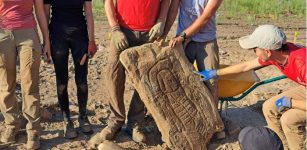 Extraordinary Archaeological Discovery In Spain
Archaeology | Oct 10, 2023
Extraordinary Archaeological Discovery In Spain
Archaeology | Oct 10, 2023 -
 Gallic Leader Vercingetorix In Victorious Battle Of Gergovia, 52 BC
Featured Stories | Jan 23, 2017
Gallic Leader Vercingetorix In Victorious Battle Of Gergovia, 52 BC
Featured Stories | Jan 23, 2017 -
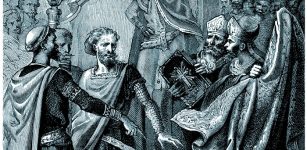 William The Conqueror: Ruthless And Powerful Ruler Who Changed Britain Forever
Featured Stories | Feb 25, 2023
William The Conqueror: Ruthless And Powerful Ruler Who Changed Britain Forever
Featured Stories | Feb 25, 2023 -
 How Ancient Cultures Explained Comets And Meteors
Archaeoastronomy | Jun 5, 2019
How Ancient Cultures Explained Comets And Meteors
Archaeoastronomy | Jun 5, 2019 -
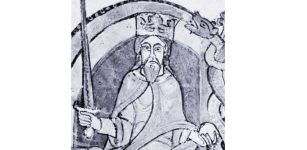 On This Day In History: David I Becomes King Of Scots – On Apr 27, 1124
News | Apr 27, 2016
On This Day In History: David I Becomes King Of Scots – On Apr 27, 1124
News | Apr 27, 2016 -
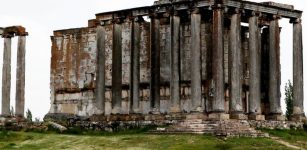 Ancient City Of Aizanoi: Statue Heads Of Greek Gods Unearthed In Excavations
Archaeology | Nov 23, 2021
Ancient City Of Aizanoi: Statue Heads Of Greek Gods Unearthed In Excavations
Archaeology | Nov 23, 2021 -
 Mystery Of Ancient Sarcophagi In Egypt
Ancient Mysteries | Aug 26, 2015
Mystery Of Ancient Sarcophagi In Egypt
Ancient Mysteries | Aug 26, 2015 -
 Mysterious Ancient Underground King And Ruler Of The World – Who Was He? Part 1
Ancient Mysteries | Jul 25, 2018
Mysterious Ancient Underground King And Ruler Of The World – Who Was He? Part 1
Ancient Mysteries | Jul 25, 2018 -
 Selah – Mysterious Biblical Word Of Unknown Meaning
Biblical Mysteries | Jan 5, 2018
Selah – Mysterious Biblical Word Of Unknown Meaning
Biblical Mysteries | Jan 5, 2018


